Phylum Cnidaria Digestive System
Phylum cnidaria digestive system. This means they have all there sensory organs in the anterior end of their bodies. Cnidaria a phylum of animals that are diploblastic and have radial symmetry and stinging cells cnidocyte a specialized stinging cell found in Cnidaria epidermis the layer of cells that lines the outer surface of an animal extracellular digestion. Cnidarians digest their food using a primitive digestive system that contains no organs--they have a mouth which also serves as the anus and a gastrovascular cavity.
Around the time of the Proterozoic Era jellyfish and hydra were of the few animals with more than one cell. Cnidaria - The Digestive System. The mouth is surrounded by tentacles that contain large numbers of cnidocytesspecialized cells bearing nematocysts used for stinging and capturing prey as well as discouraging predators.
Cnidarians are predators who use many different nematocysts to puncture and entrap their prey. The phylum Cnidaria is abundantly diverse and contains marine creatures such as the present-day jellyfish anemones corals and hydroids which are well-known for having distinctive features. Some animals do the hunting while others get hunted.
Anthozoa Scyphozoa Cubozoa and Hydrozoa. Jellyfish coral Hydra sea anemone and sea pens are the examples of cnidarians. Animals in phylum Cnidaria have a Gastrovascualar Cavity GVC.
This process is called the Gastrovascular Cavity. Cnidarians digest through extracellular digestion where food is broken down in a digestive system and then. This is a step up from the Cnidarians 2 germ layers however they still have no coelom.
A polyp or a medusa. The phylum Cnidaria has an efficient primitive digestive system and therefore has not undertaken a dramatic evolution over the past course of time. The GVC helps with digestion and distribution.
Cnidaria is a phylum which contains invertebrate animals with specialized stinging structures in the tentacles that surround the mouth. Cnidarians possess a well-formed digestive system and carry out extracellular digestion in a digestive cavity that extends through much of the animal.
The biggest difference between the 2 phylums is that organisms belonging to the Platyhelminthes phylum are cephalized.
Cnidarians have a one way digestive system. A polyp or a medusa. Platyhelmenthians also have a digestive track with an. Cnidarians are aquatic animals that contain stinging cells called cnidocytes. The body type of cnidarians can be two types. This means that undigested food and digested food are passed through the same place. The two basic body forms in cnidaria are medusae the umbrella-like free-swimming organisms involved in sexual reproduction like jellyfish and polyps the cylindrical sessile organisms of nutritive importance like the hydra. They have a one way digestive system. The mouth is surrounded by tentacles that contain large numbers of cnidocytesspecialized cells bearing nematocysts used for stinging and capturing prey as well as discouraging predators.
Cnidarians have a one way digestive system. This is a step up from the Cnidarians 2 germ layers however they still have no coelom. Every animal has their way of surviving this forever changing world. Jellyfish coral Hydra sea anemone and sea pens are the examples of cnidarians. This one way digestive tract is called the Gastrovascular Cavity. The biggest difference between the 2 phylums is that organisms belonging to the Platyhelminthes phylum are cephalized. Around the time of the Proterozoic Era jellyfish and hydra were of the few animals with more than one cell.





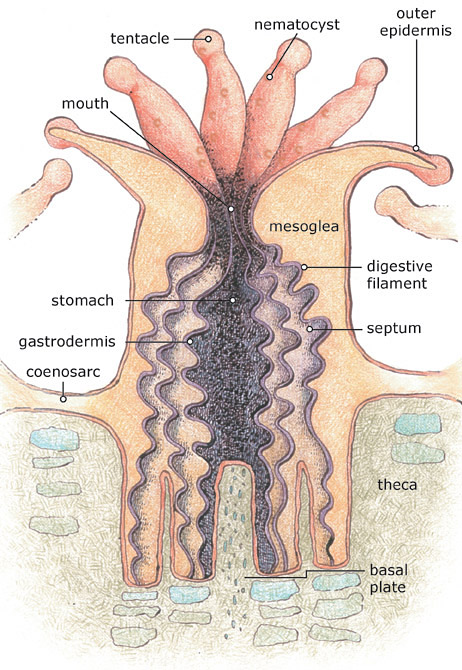


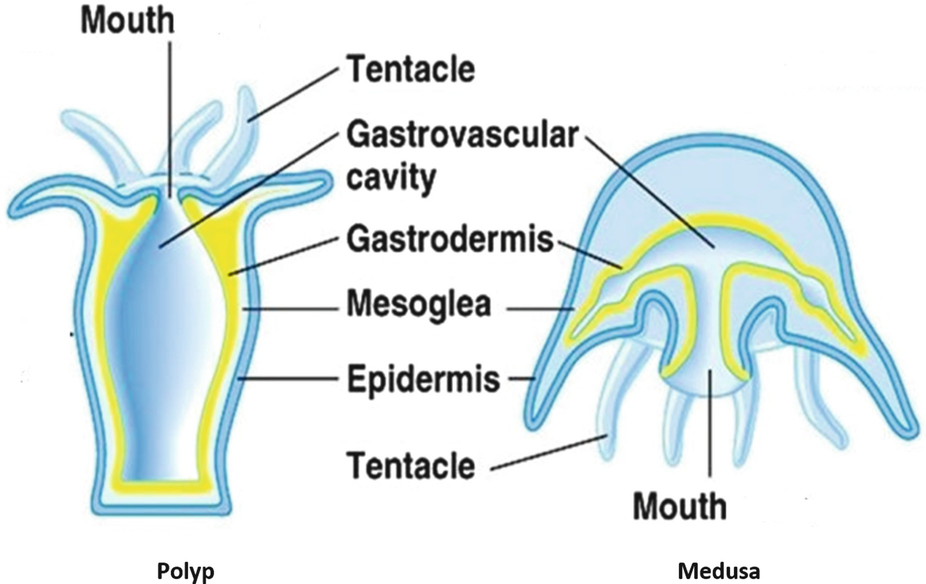
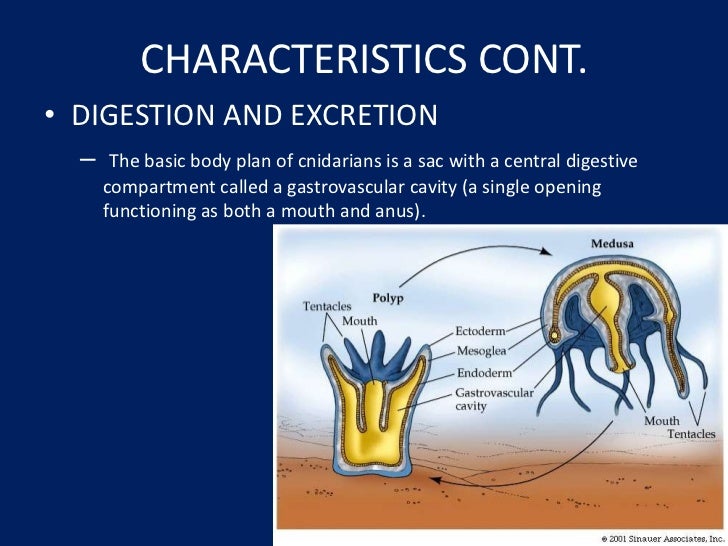


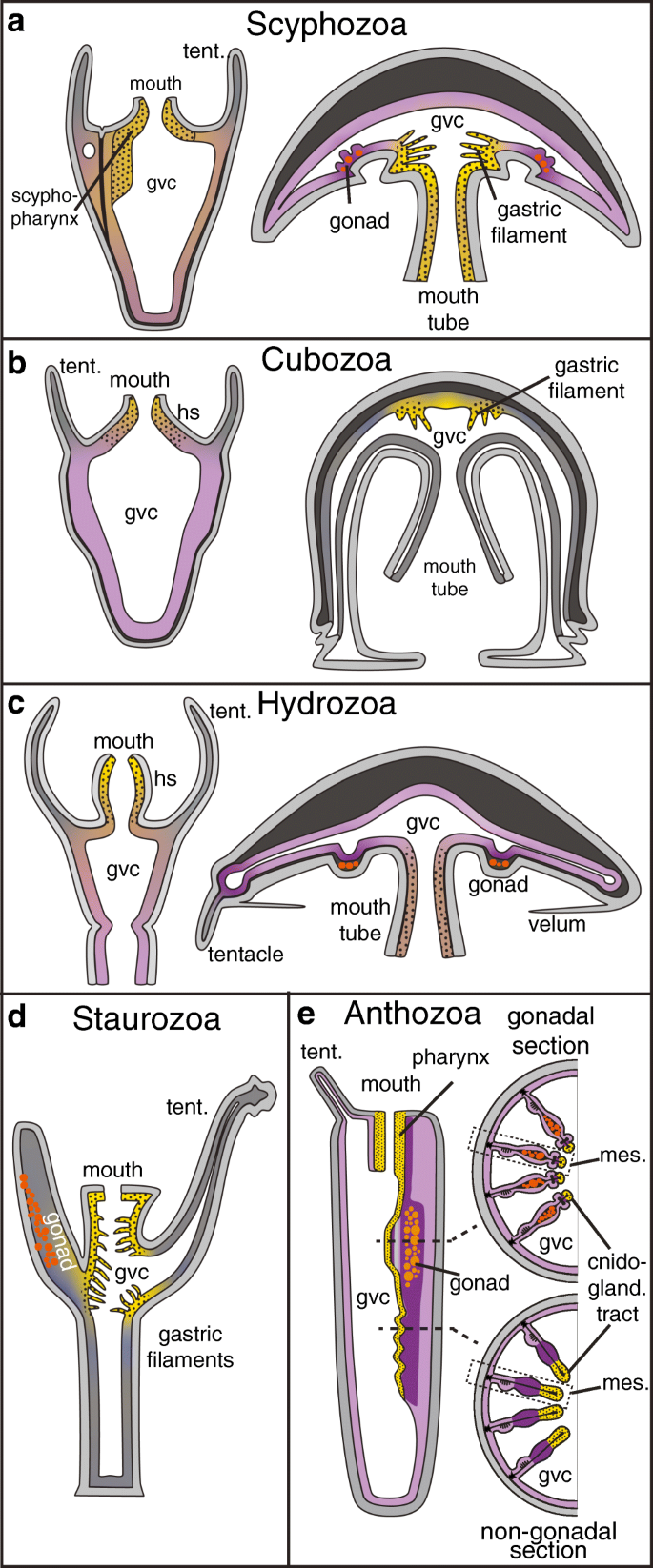



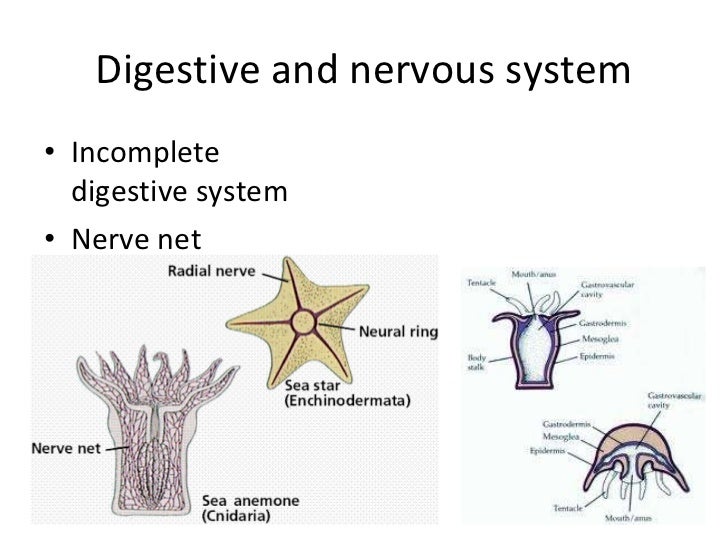






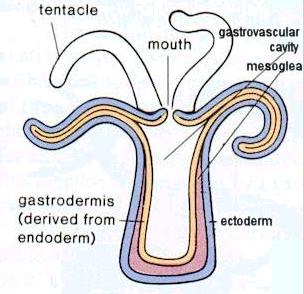


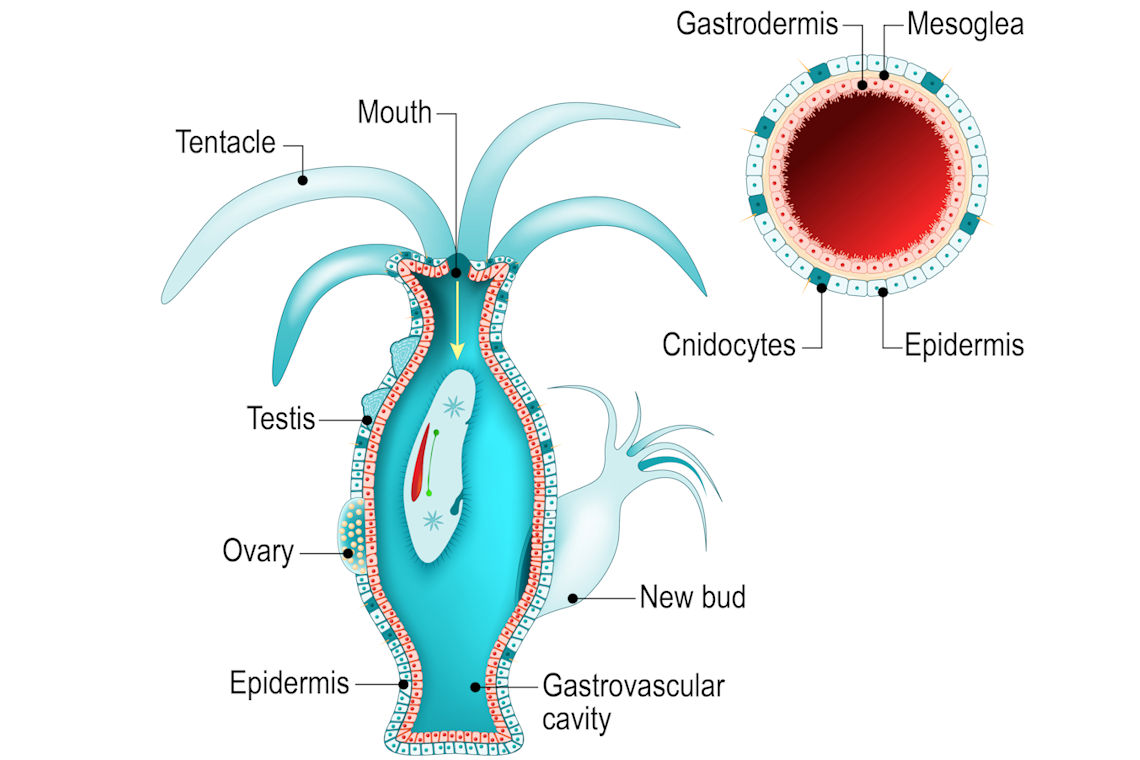



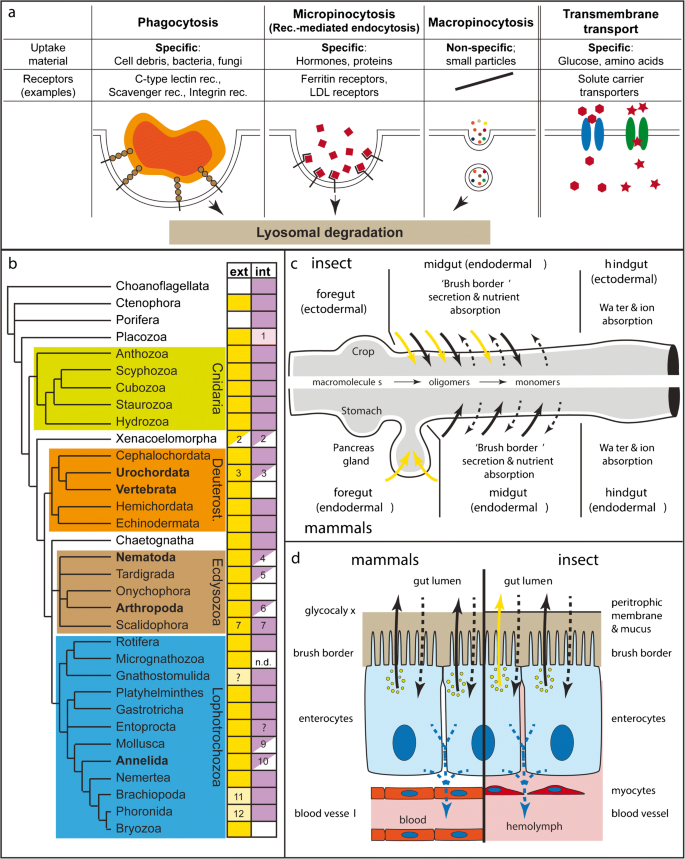







Post a Comment for "Phylum Cnidaria Digestive System"